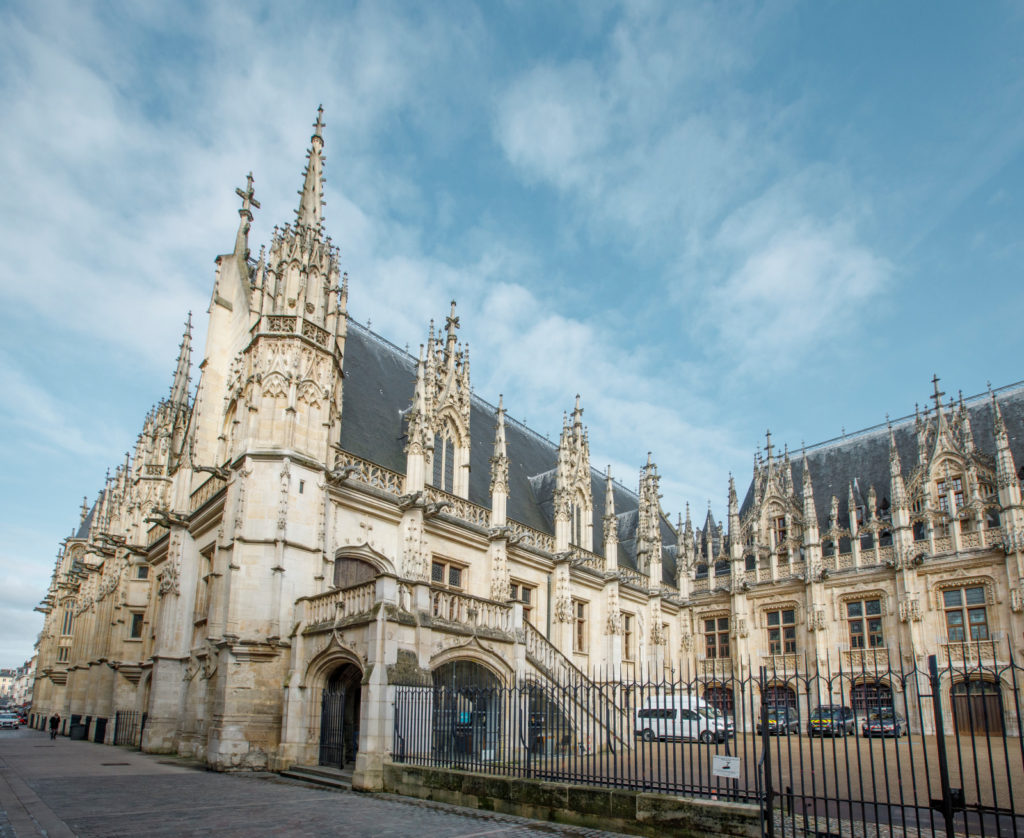Discovery of the building
On 11 August 1976, a major archaeological discovery interrupted paving repair work which had recently started in the courtyard of the Palais de Justice. Site machinery broke through the vault of a Romanesque cellar, revealing an initial monument beneath the forecourt of the Palais de Justice. It was decided to carry out a systematic survey of the entire courtyard due to this discovery. Two days later, on Friday, 13 August 1976, a second Romanesque building was discovered. This building – even larger than the first one – would later be named the Maison Sublime.
Archaeologists started a thorough set of excavations. They described and recorded their discoveries, attempting the determine the history of the monument and to answer the following questions: When was it built? How was it built? Where were the stones from? How was it used ?
The issue is particularly crucial, as historians have long-known that the Jewish neighbourhood was previously located at the site of the current Palais de Justice.
In a book published four months earlier but not translated into French, Professor Norman Golb identified a yeshiva on Rue aux Juifs.
Yeshiva: A Yeshiva is a school where the Talmud is studied.
Along with the Torah, the Talmud is one of the fundamental texts of Judaism. Compiled in the 5th century, it contains the rabbinical interpretation of all topics mentioned in the Hebrew Bible. It covers prayers, rites, celebrations, weddings, law and justice, food laws…
As the archaeological excavations continued, new hypotheses emerged. Many historians took part in discussions to determine the purpose of the Maison Sublime.
Archaeological excavations and different hypotheses
During an initial excavation in August and September 1976, the north, west and south walls of the Maison Sublime were unearthed. The staircase of the Palais de Justice’s Court of Appeal had to be dismantled to continue investigations and access the east wall in the following year.
The first discoveries uncovered a beautiful Romanesque building in cut stone. The building’s location – in the heart of the medieval Jewish neighbourhood – made this discovery even more interesting, as the excavations soon revealed a series of Hebrew graffiti carved into the walls.
Why do we call it the Maison Sublime ?
The monument’s name is taken from some Hebrew graffiti discovered on one of the walls of the lower room. It is a quotation from the Book of Kings (I, 9, 8): “And this house shall be sublime until the Rock (the King of Israel) has mercy upon Zion”.
A second hypothesis on the purpose of the monument emerged from these inscriptions, alongside that of a yeshiva. Some historians champion the idea that the Maison Sublime was a synagogue.
Finally, based on the results of excavations and various architectural comparisons, a third hypothesis was put forward – a private home.
Far from concluding, debates between proponents of these three hypotheses (rabbinical school, synagogue and private home) would continue long after the end of archaeological excavations. Neither the results of these excavations nor written materials make it possible to choose one of these different hypotheses.
Yet the discovery of the monument is no less exceptional. The Maison Sublime offers major archaeological evidence of the history of medieval Judaism, and thus is a valuable piece of heritage.
The Palais de Justice, a masterpiece of Gothic architecture

The Maison Sublime is located beneath the courtyard of the Palais de Justice. This true masterpiece of Gothic architecture was built at the end of the Middle Ages in the very location of the city’s former Jewish neighbourhood. Over the centuries, the building was extended several times. Before being the site of the Palais de Justice, the monument was, in turn, the seat of the Echiquier de Normandie, then the Parlement de Normandie.
Visiting the Maison Sublime means entering the courtyard of this remarkable piece of history to discover, hidden beneath the paving, a building with exceptional historical significance.
Site conservation and public opening
On the initiative of Jean Lecanuet, then mayor of Rouen, the remains of the Maison Sublime were classified as an official Historic Monument on 1 July 1977. This meant they could be protected and restored.
Once excavations were complete, an archaeological crypt was designed by Georges Duval, chief architect of Historic Monuments. This crypt aimed to preserve the remains whilst allowing the monument to be visited.
The monument was unveiled on 13 October 1980 and opened to the public for the first time.
At the end of the 20th century, new archaeological discoveries were made in the former medieval Jewish neighbourhood. Two other stone houses dating from the same period as the Maison Sublime were uncovered. In 1982, a building was discovered underneath the Tribunal de Grande Instance, to the south of Rue aux Juifs. A few years later, in 1985, another Romanesque building was found beneath the east wing of the Palais de Justice.